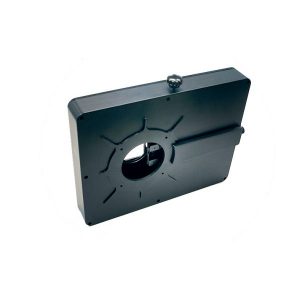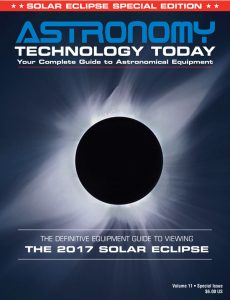The SBIG STXL series is a high performance astro imaging platform supporting large format CCD sensors. It includes support for self-guiding filter wheels, and the AO-X adaptive optics accessory. The STXL-11002M uses the popular 35 mm, 11 megapixel KAI-11002 sensor. The STXL-16200 is a 16 megapixel, APS format camera. The high quantum efficiency KAF-6303E full frame sensor is especially popular for photometric measurements and high quality astro imaging.
 SBIG’s STXL cameras represent the latest iteration of its flagship STX series. The STXL improves on the STX in three ways: First, the self-guiding CCD is moved from the main camera body to the new STXL filter wheel for guiding in front of filters; second, a rotating-disk even-illumination shutter provides a shorter back-focus distance, allowing the use of camera lenses; and third, the STXL uses the STT remote guide head.
SBIG’s STXL cameras represent the latest iteration of its flagship STX series. The STXL improves on the STX in three ways: First, the self-guiding CCD is moved from the main camera body to the new STXL filter wheel for guiding in front of filters; second, a rotating-disk even-illumination shutter provides a shorter back-focus distance, allowing the use of camera lenses; and third, the STXL uses the STT remote guide head.
Two STXL filter wheel options are available for the STXL series camera. The standard and self-guiding eight-position STXL filter wheels are of a similar design as SBIG’s STT filter wheels – they use the same precise positioning mechanism, but accommodate 50-mm round unmounted filters, and as noted, with the self-guiding model, the guiding CCD is incorporated into the filter wheel in front of the filters.
It is well known that the advantage of easier guiding through separate guide scopes is often limited by differential deflection of the guide scope relative to the main optical axis due to mechanical flexure or shifting of the mirror in the main OTA. It was this difficulty that SBIG addressed with its patented self-guiding design and that it and others have also addressed with off-axis guiding solutions.
 Self-guiding is more convenient and more accurate, but can prove more difficult when narrowband filters are used. Previously, by piecing together an off-axis guiding system with parts from different manufacturers, users could place a guider in front of the filters, but this was generally more expensive, required additional equipment and did not always integrate well.
Self-guiding is more convenient and more accurate, but can prove more difficult when narrowband filters are used. Previously, by piecing together an off-axis guiding system with parts from different manufacturers, users could place a guider in front of the filters, but this was generally more expensive, required additional equipment and did not always integrate well.
Also, controlling two cameras might require one computer to run two instances of camera control software. The ideal solution was therefore to design a self-guiding system that placed the guiding CCD in front of the filters using an integrated design that is easy to control, as does SBIG’s new filter wheel/guider design of the STT and STXL cameras.
The guiding CCD is built into the filter wheel and connects directly to the main cameras as an “external” tracking CCD. The optical design is optimized for guiding and all the commands and control of the guider are identical to those of SBIG’s traditional self-guiding design. The guider does not require any power or control cables routed back to a computer, and the system can be operated by a single software package as one camera.
The STXL series starts at $6,495US. Visit www.sbig.com for more information.
###
 The Astronomy Technology Today editorial staff would like to take this opportunity to remind you of the availability of our Solar eclipse equipment guide – The Definitive Equipment Guide to the 2017 Solar Eclipse. Our goal with the 40 page publication is to provide an easy-to-consume introduction to the technological options for viewing and imaging the Great Solar Eclipse. We cover the gamut of options available including building you own solar viewer, solar glasses, smart phones, DSLR cameras, using astronomy telescopes, solar telescopes, using binoculars, solar filters (including a DYI filter option), CCD astro cameras, astro video cameras, webcams and much more. You can view the guide on our website here – its free and there is no requirement to sign up to read the guide.
The Astronomy Technology Today editorial staff would like to take this opportunity to remind you of the availability of our Solar eclipse equipment guide – The Definitive Equipment Guide to the 2017 Solar Eclipse. Our goal with the 40 page publication is to provide an easy-to-consume introduction to the technological options for viewing and imaging the Great Solar Eclipse. We cover the gamut of options available including building you own solar viewer, solar glasses, smart phones, DSLR cameras, using astronomy telescopes, solar telescopes, using binoculars, solar filters (including a DYI filter option), CCD astro cameras, astro video cameras, webcams and much more. You can view the guide on our website here – its free and there is no requirement to sign up to read the guide.

